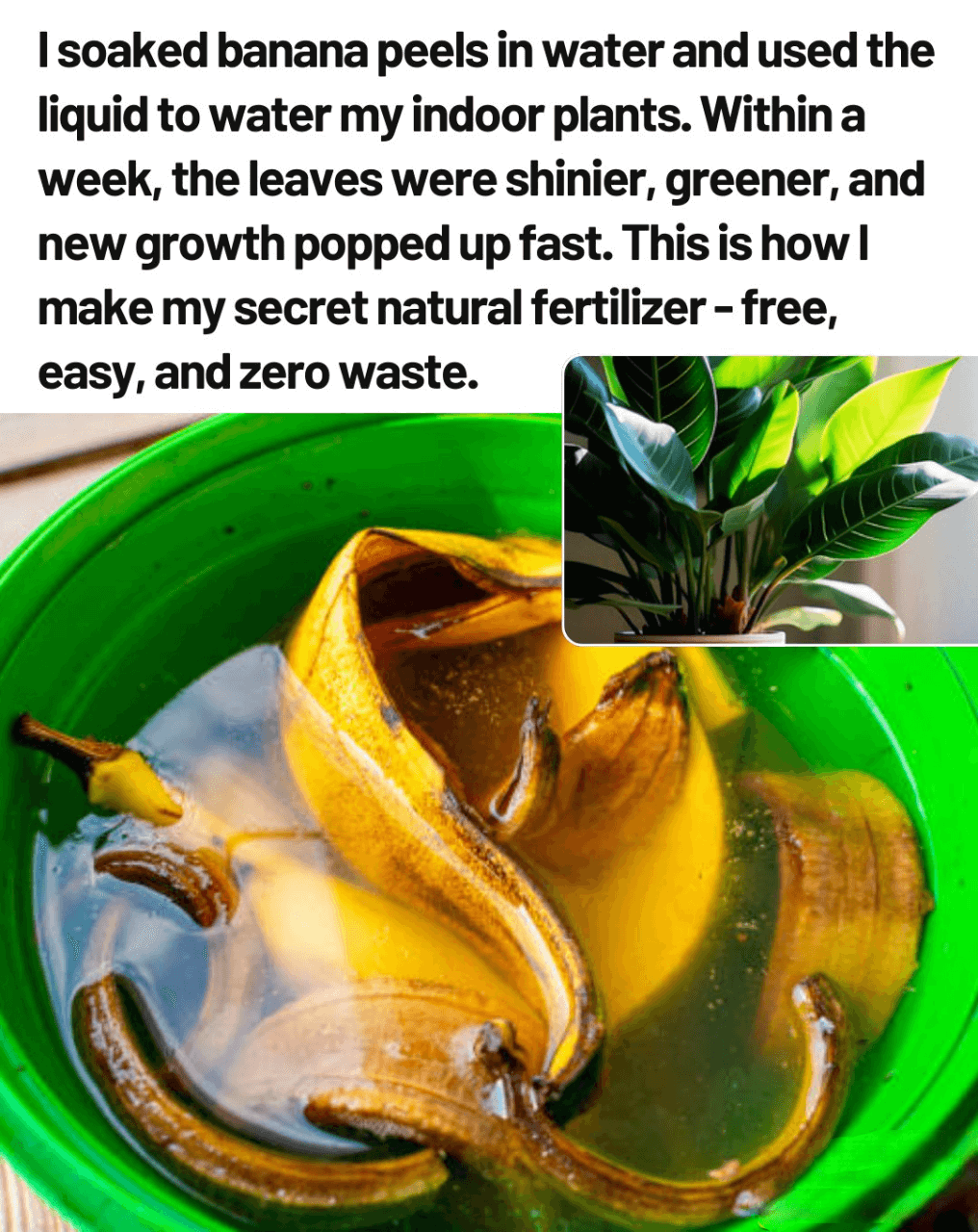Banana peels might seem like simple kitchen scraps, but for gardeners, they’re a natural resource packed with value. Loaded with potassium, phosphorus, and calcium, banana peels can boost plant health, repel unwanted pests, and improve your soil’s quality—all without costing you a cent. They’re biodegradable, easy to use, and make gardening more sustainable. Here are 12 effective and practical ways to put banana peels to good use in your garden.
1. Natural Fertilizer
Banana peels are full of plant-friendly nutrients, especially potassium and phosphorus, which promote strong root systems and better flower production.
How to Use:
Cut banana peels into small pieces and bury them near your plants. Let them break down naturally to enrich the soil.
2. Banana Peel Tea
This homemade liquid fertilizer delivers a quick nutrient boost to your plants.
How to Make:
Add two to three banana peels to a container with a liter of water. Let it sit for 24 to 48 hours. Strain and use the liquid to water your plants.
Great for: Tomatoes, roses, and other plants that thrive on potassium.
3. Compost Enhancer
Banana peels decompose quickly and contribute rich nutrients to your compost.
How to Use:
Add banana peels to your compost bin or pile. Chop them into smaller pieces to speed up decomposition.
Pro tip: Combine with leaves and grass clippings for a balanced compost mix.
4. Natural Pest Deterrent
The scent of banana peels can help repel aphids, ants, and caterpillars.
How to Use:
Bury chopped peels just beneath the soil’s surface around your plants.
Caution: Don’t leave them exposed on the surface, as this may attract raccoons or other scavengers.
5. Organic Rooting Aid
Banana peels contain natural growth-promoting substances ideal for propagating plants.
How to Use:
Blend peels with water into a paste. Dip the ends of cuttings into the mixture before planting.
Best for: Roses, pothos, and other common houseplants.
6. Soil Booster
Adding banana peels directly into your garden beds enhances soil nutrition and structure.
How to Use:
Slice the peels and mix them into the topsoil, letting them decompose gradually to feed your plants.
7. Mulch Alternative
Banana peels can act as a natural mulch, conserving moisture and feeding the soil.
How to Use:
Lay peels flat around your plants, then cover them lightly with traditional mulch to prevent pest attraction.
Ideal for: Flowering plants like roses.
8. Seedling Support
Give young plants a nutritious foundation by using banana peels during planting.
How to Use:
Place strips of banana peel in the bottom of planting holes, add soil, and then insert your seedlings.
Benefit: As the peel breaks down, it nourishes the roots directly.
9. Draw Pollinators
Small pieces of banana peel can attract helpful insects like bees and butterflies.
How to Use:
Place peel chunks near flowering plants to attract pollinators. Replace them often to avoid drawing unwanted pests.
10. Make Banana Peel Vinegar for Acid-Loving Plants
Fermented banana peel water acts as a gentle acidifier for certain plants.
How to Make:
Chop peels and place them in a jar filled with water. Let it ferment for 1 to 2 weeks. Use the liquid as a soil treatment for plants like blueberries and hydrangeas.
11. DIY Aphid Trap
Use banana peels to help control aphid infestations.
How to Use:
Set small pieces near affected plants. After a day or two, remove the peels before other pests show up.
Tip: Use in combination with neem oil for even better pest control.
12. Natural Leaf Cleaner
Banana peels are great for polishing indoor plant leaves, leaving them clean and glossy.
How to Use:
Rub the inner side of a fresh peel gently over the leaves. Follow up with a damp cloth to remove residue.
Works best on: Smooth leaves like those on pothos and rubber plants.
Why Use Banana Peels in the Garden?
Eco-Friendly: Helps reduce kitchen waste and encourages sustainable practices.
Cost-Effective: A free and natural substitute for commercial fertilizers.
Nutrient-Rich: Promotes stronger, healthier plants.
Pest Control: Naturally discourages harmful insects.
Supports Pollinators: Attracts bees and butterflies to boost pollination.
Tips for Success
Chop or Blend: Smaller pieces break down faster and release nutrients more quickly.
Bury Peels: This keeps pests away and speeds up decomposition.
Use Fresh Peels: Avoid moldy peels that could invite unwanted bugs.
Rotate Locations: Apply banana peel methods in different garden areas to keep soil balanced.
Banana peels are an easy, natural, and versatile tool for any gardener. Whether you’re trying to fertilize plants, fight pests, or boost your compost, these household scraps can make a big difference in your garden’s health and sustainability.
